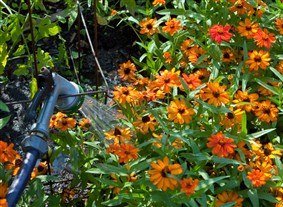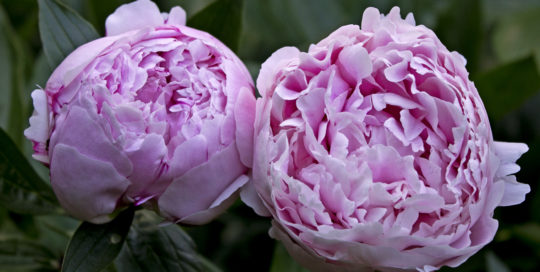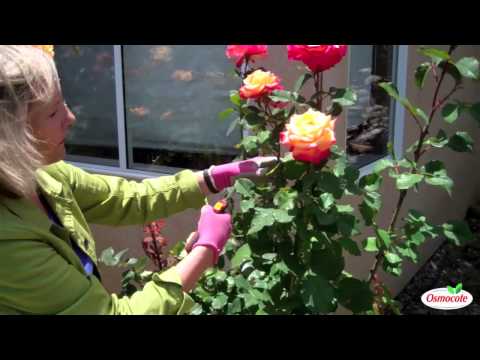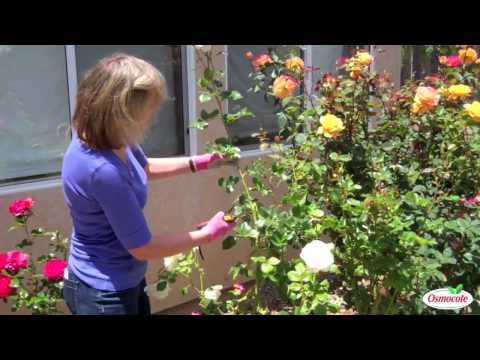Three Things you need to do now:
Yes, you can have roses that bloom and look great all summer long. All you need is a triple line of defense from the three biggest mistakes that home owners make when it comes to summer rose care. Keep these promises and I’ll promise you a rose garden that delivers joy all summer.
Promise number one: Fertilize your roses:
By mid-summer rose plants have used up lots of energy producing that first glorious flush of blooms. Now they are hungry again. A slow release plant food like Osmocote will give them the nutrients they need to produce more new growth and a second wave of flower power. Late spring is when rose growers need the first application of fertilizer. However, many gardeners neglect to fertilize in mid-summer when roses are regrouping for a second growth spurt.
Roses are considered “heavy feeders”. This means they continue to grow all summer and draw more nutrients from the soil than the average perennial or annual flower. This means roses respond well to more than the recommended amount of fertilizer than the average plant requires. If you want roses that flower all summer long you must provide them with food all summer long.
You can tell if your roses are hungry by looking at the new growth. If the new leaves are small and pale green and if you see a lack of flower buds on the summer growth than get out there and give a good meal to your hungry roses. Sprinkle the Osmocote granules around the base of each rose plant. Work the product lightly into the top inch of soil and water well. Now stand back. The warm soil in mid-summer means that even a slow release plant food like Osmocote will be released more quickly than a spring feed. You’ll notice greener leaves and new flower buds in a few weeks.
Tip:
The large containers of Osmocote come with a “shaker top” that allows the product to be shaken out over the surface of the soil. You can shake the product into the cap to use as a measuring guide. One cap full of Osmocote Outdoor and Indoor equals three tablespoons of fertilizer, the right amount for a 2 gallon pot or 4 square feet of soil around roses growing in the ground.








